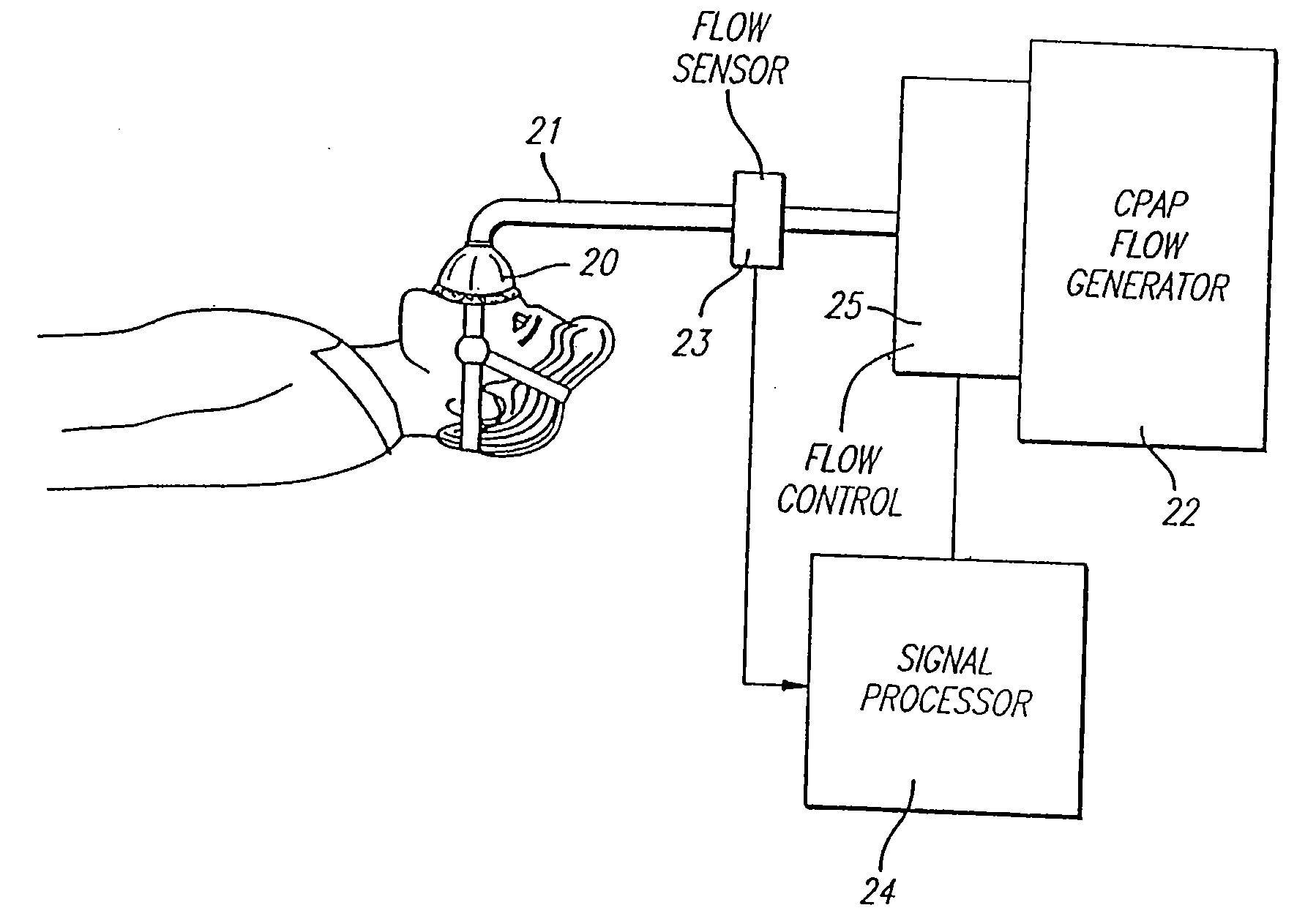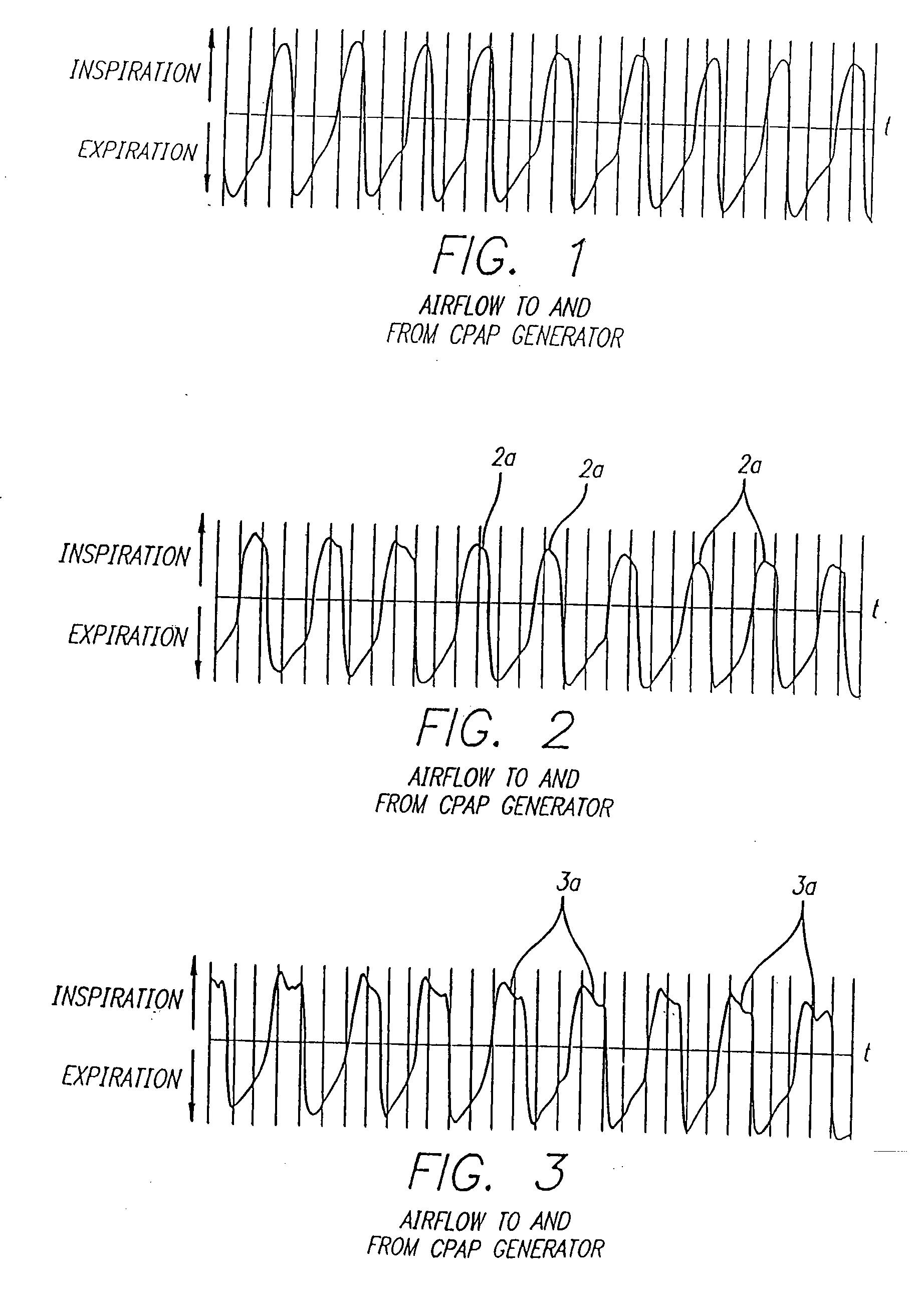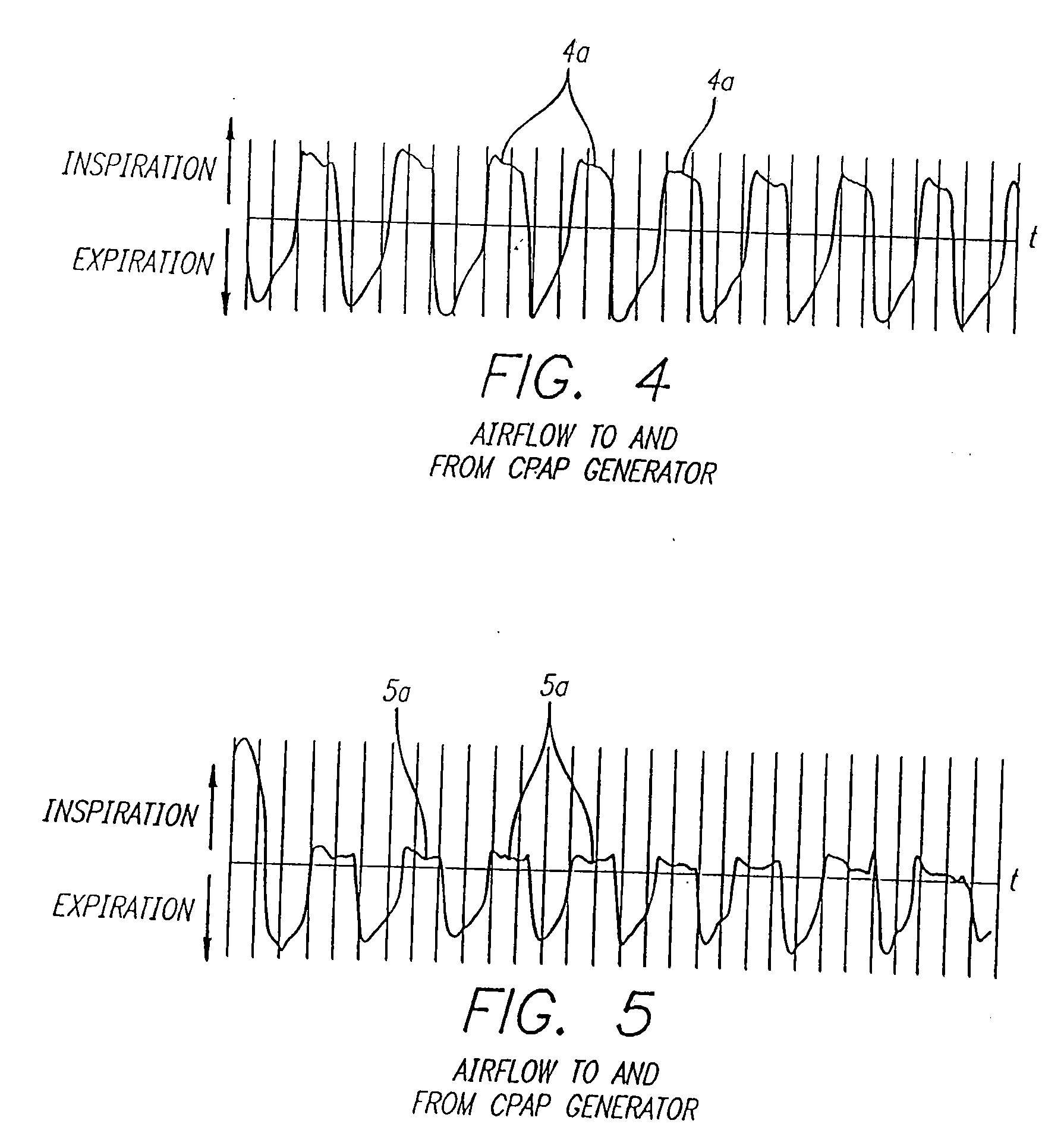Method and Apparatus for Optimizing the Continuous Positive Airway Pressure for Treating Obstructive Sleep Apnea
a positive airway pressure and obstructive sleep apnea technology, applied in the field of positive airway pressure optimization, can solve the problems of obstructing the upper airway during sleep, excessive daytime somnolence, spectrum of respiratory disturbances, etc., and achieves controlled positive increased or decreased pressure to the patient, and periodic reduction of controlled positive pressure
- Summary
- Abstract
- Description
- Claims
- Application Information
AI Technical Summary
Benefits of technology
Problems solved by technology
Method used
Image
Examples
Embodiment Construction
[0037]FIGS. 1-5 illustrate the waveforms of flow from a CPAP generator, obtained during the testing of a patient, in sleep studies. In these tests, the patient was wearing a CPAP mask connected to an air source, in the manner illustrated in U.S. Pat. No. 5,065,765. Each of these tests illustrate an epoch of 30 seconds, with the vertical lines depicting seconds during the tests. FIGS. 1-5 depict separate sweeps that were taken from 1 to 2 minutes apart, and with different pressures from the source of air.
[0038]FIG. 1 illustrates a “normal” waveform, in this instance with a CPAP pressure of 10 cm H2O. This pressure was identified as corresponding to apnea free respiration. It is noted that this waveform, at least in the inspiration periods, is substantially sinusoidal. The waveforms of FIGS. 2-5 illustrate that, as the controlled positive pressure is lowered, a predictable index of increasing collapsibility of the airway occurs, prior to the occurrence of frank apnea, periodic breath...
PUM
 Login to View More
Login to View More Abstract
Description
Claims
Application Information
 Login to View More
Login to View More - R&D
- Intellectual Property
- Life Sciences
- Materials
- Tech Scout
- Unparalleled Data Quality
- Higher Quality Content
- 60% Fewer Hallucinations
Browse by: Latest US Patents, China's latest patents, Technical Efficacy Thesaurus, Application Domain, Technology Topic, Popular Technical Reports.
© 2025 PatSnap. All rights reserved.Legal|Privacy policy|Modern Slavery Act Transparency Statement|Sitemap|About US| Contact US: help@patsnap.com



